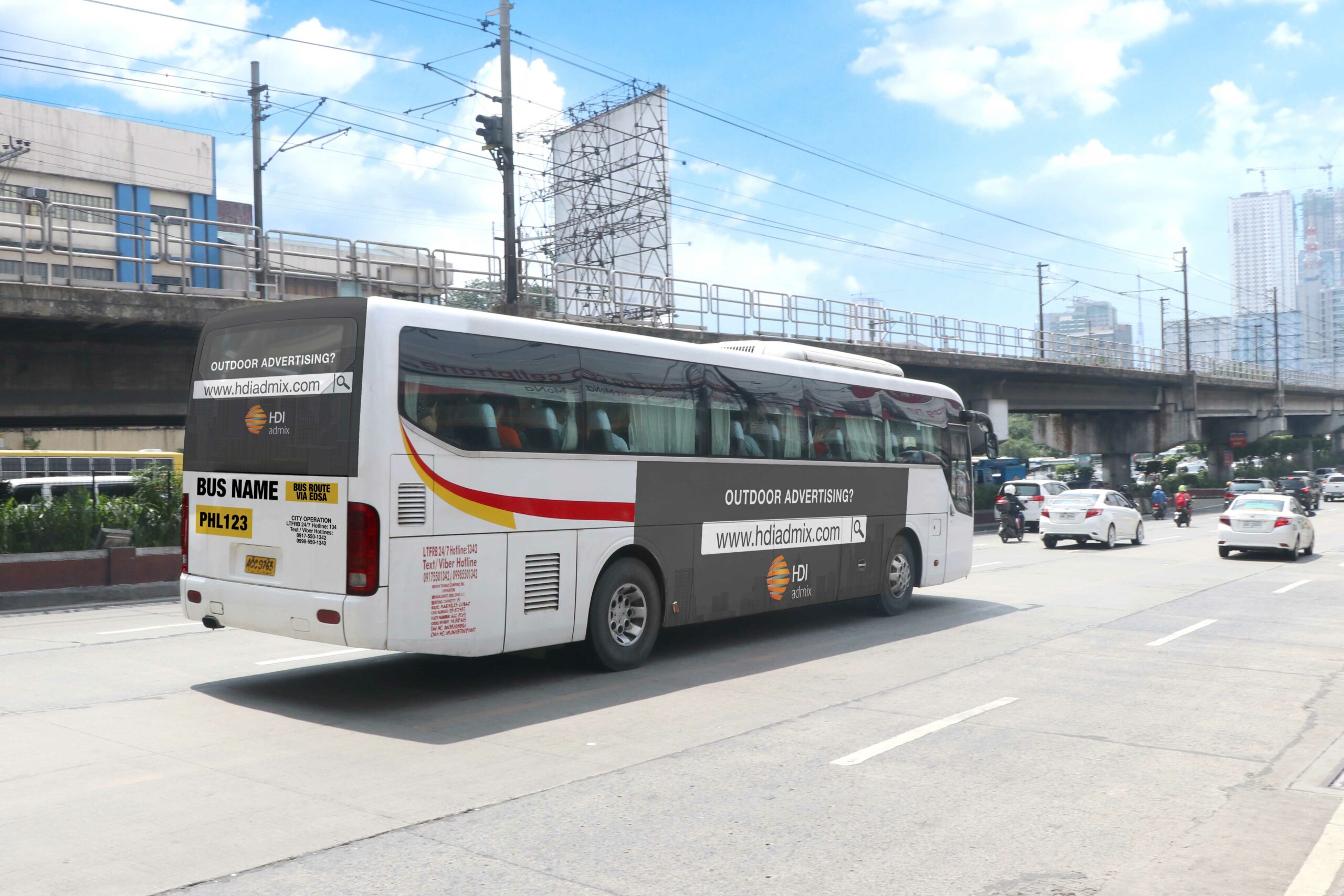Transit Advertising Philippines: Get To Thousands of Commuters Daily
A Detailed Exam of the Methods and Methods for Effective Transit Advertising Campaigns
Transportation marketing campaigns provide a special possibility for brands to engage with diverse audiences in dynamic atmospheres. As we discover these important components, it becomes clear that the path to an impactful transit advertising and marketing method is both rewarding and detailed, increasing the inquiry of how finest to browse these complexities for maximum brand name visibility.
Comprehending Target Demographics
Recognizing target demographics is crucial for the success of transportation advertising campaigns (Transit Advertising Philippines). Determining certain target market sections enables advertisers to customize their messages efficiently, making certain that the web content resonates with the desired audiences. This strategy improves interaction and makes best use of roi
To effectively examine target demographics, online marketers must think about a number of key factors, including age, income degree, way of living, and line of work preferences. For example, a project focused on young specialists might focus on comfort and modernity, while one targeting households may emphasize safety and reliability. Furthermore, geographical elements such as city versus rural settings can significantly influence customer habits and choices.
Data collection methods such as surveys, emphasis groups, and social media analytics provide useful insights right into group fads and customer routines. By leveraging this details, marketers can craft engaging narratives that line up with the worths and requirements of their target audience.
Eventually, recognizing target demographics not just educates the critical instructions of transportation marketing campaign however likewise guarantees that sources are assigned successfully. This targeted strategy raises the chance of attaining project purposes, cultivating brand name loyalty, and driving conversions.
Creative Style Strategies
Reliable communication with target demographics depends greatly on cutting-edge imaginative style methods en route advertising and marketing projects. To efficiently capture attention in a congested aesthetic environment, developers have to focus on clearness and aesthetic impact. Making use of high-contrast components and bold colors can boost presence, making sure that messages are conveniently legible from a range.
Integrating dynamic images that reverberates with the target market is crucial. Aesthetic storytelling strategies can evoke emotions and create remarkable associations with the brand. Moreover, strategic usage of typography helps share crucial information rapidly; clear typefaces and proper sizes further boost readability.
Incorporating interactive aspects, such as QR codes or increased fact attributes, can involve commuters past passive monitoring (Transit Advertising Philippines). These strategies not just advertise customer communication but additionally link the gap in between typical advertising and marketing and digital involvement
In addition, utilizing room creatively-- whether on bus wraps, transportation sanctuaries, or metro advertisements-- can bring about cutting-edge formats that break the mold and mildew of standard advertising. By accepting creative creative thinking while maintaining brand uniformity, campaigns can cultivate a strong connection with their target market, ultimately driving both recognition and action. The integration of these layout strategies is critical for attaining effective transportation advertising and marketing outcomes.
Strategic Placement Approaches
Making the most of the influence of transit marketing depends upon strategic positioning approaches that ensure optimal visibility and engagement. Efficient positioning involves comprehending and assessing high-traffic areas passenger demographics to determine the most beneficial places for ad display screens. As an example, placing ads near entries and leaves of transportation lorries can record the focus of boarding and alighting guests, hence improving direct exposure.
Furthermore, utilizing both exterior and indoor surface areas of transportation cars can dramatically broaden reach. Exterior advertisements, visible during commutes, involve pedestrians and various other vehicle drivers, while interior advertisements target travelers in a captive setting. Additionally, positioning advertisements en route hubs, such as bus terminals or train terminals, permits raised impressions as travelers Visit Website change between various settings of transport.
Timing is likewise vital; aligning the campaign launch with peak traveling durations optimizes audience interaction - Transit Advertising Philippines. Furthermore, leveraging digital screens en route environments can promote vibrant material, boosting and providing real-time updates user communication. By utilizing these calculated positioning techniques, online marketers can make sure that their transportation ad campaign achieve optimal visibility, resonate with the target market, and inevitably drive wanted outcomes

Measuring Campaign Efficiency
To analyze the success of transit ad campaign, it is important to employ a selection of measurement methods that provide understandings right into audience involvement and overall efficiency. One key approach is using essential performance signs (KPIs), such as reach, perceptions, and interaction prices, which measure exactly how numerous individuals saw the promotion and interacted with it.
Studies and focus groups can additionally contribute in assessing customer assumptions and recall, permitting marketing professionals to recognize the influence of their messaging. Additionally, tracking website web traffic and social media engagement throughout and after the project aids gauge direct responses to the marketing.
An additional efficient technique is making use of location-based analytics, which can supply information walking traffic around certain transit areas, using insights right into whether the campaign successfully captured the attention of commuters. In addition, assessing sales data can reveal relationships between transportation advertising and boosted revenue, providing concrete proof of advice a campaign's efficiency.
Study of Success
Recognizing the performance of transportation advertising and marketing projects via measurement techniques lays the groundwork for examining real-world instances that show successful end results. By employing geo-targeted electronic advertisements and analytics, the brand gauged a 30% increase in sales in regions where the wraps were plainly presented, demonstrating the straight influence of transportation advertising.
An additional compelling example comes from a regional nonprofit organization that launched a project on subway systems to advertise a community occasion. The organization combined lively visuals with QR codes routing travelers to a registration web page. Post-campaign evaluation exposed a 50% increase in occasion presence contrasted to the previous year. Making use of direct engagement through technology magnified the project's reach and efficiency.

Conclusion
In summary, successful transportation marketing projects require a thorough technique that integrates an understanding of target demographics, ingenious layout methods, and strategic positioning. Collectively, these strategies foster brand name existence and optimize the return on investment in transit advertising efforts.
Comprehending target demographics is crucial for the success of transit advertising and marketing projects.Efficient communication with target demographics relies greatly on ingenious creative layout strategies in transportation advertising and marketing projects. By utilizing these calculated placement methods, marketing experts can make certain that their transportation advertising campaigns attain optimal exposure, reverberate with the target audience, and eventually drive desired outcomes.
Comprehending the effectiveness of transportation marketing projects with measurement strategies lays the foundation for analyzing real-world examples that illustrate effective results.In summary, effective transportation marketing projects require a thorough technique that incorporates an understanding of target demographics, ingenious design techniques, and tactical placement.